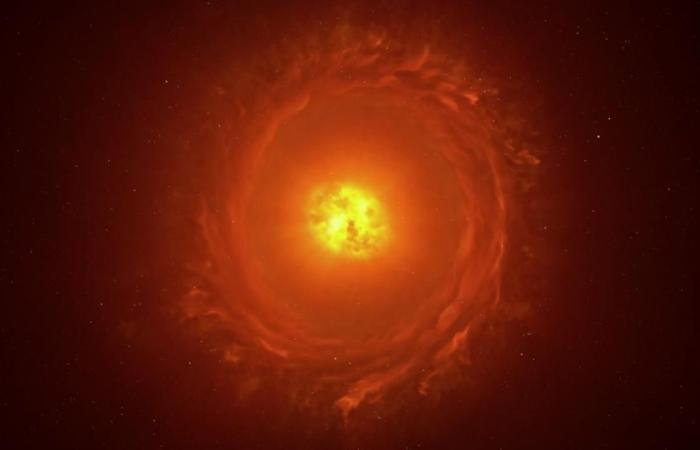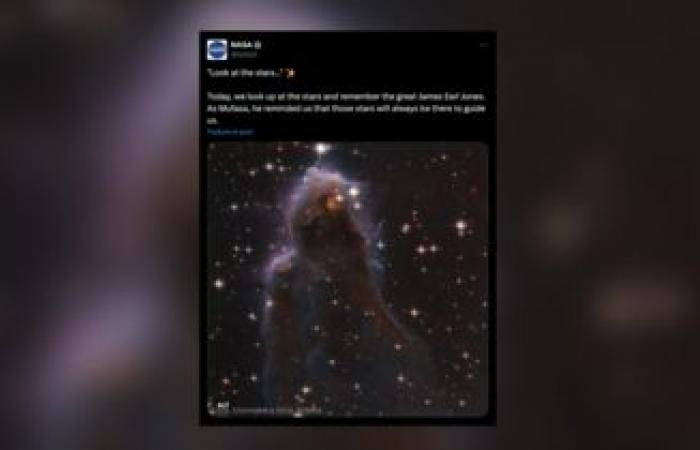Located 160,000 light years from Earth, the star WOH G64 fascinates scientists from the European Southern Observatory (ESO) who managed to capture the star at the end of its life, allowing them to better study its disappearance process. A first.
A swan song under close surveillance. Scientists from the European Southern Observatory (ESO) have succeeded in capturing a detailed image of the star WOH G64 located in a galaxy other than our Milky Way, a first which will allow them to better study this star at the end of its life .
“Thanks to this image, we can create a better computer model of the star and study how it ejects matter before it disappears,” Keiichi Ohnaka, an astrophysicist at Andrés Bello University in Chile, told AFP. led a study on these observations, published Thursday in the journal Astronomy & Astrophysics.
At 160,000 light years, the star is located within the Large Magellanic Cloud, a group of two dwarf galaxies close to ours. Nicknamed the “colossal star” by astronomers, WOH G64 is approximately 2,000 times larger than our Sun.
Discovered in 1970, the star is classified as a red supergiant, one of the last stages in the evolution of massive stars before their supernova explosion.
L’instrument Gravity
“We discovered an egg-shaped cocoon tightly surrounding the star,” Keiichi Ohnaka said in a press release. “The ovoid shape in the center represents material ejected by the central star and still surrounding it. We can also see another oval ring surrounding this ovoid shape. Although additional observations are needed to definitively confirm this, we believe that this ring is also made up of material ejected from the star,” he continued.
To obtain this image, scientists were able to rely on the Very Large Telescope of the European Astral Observatory (ESO), located in the Atacama Desert (Chile) and its Gravity instrument, which captures the light from four glasses , creating highly detailed cosmic images.
![La Nasa a publié le cliché d'un nuage de gaz en forme de lion pour rendre hommage à James Earl Jones. [Capture écran X / Nasa]](https://new.dayfr.cam/wp-content/uploads/2024/11/The-incredible-detailed-image-of-a-star-located-outside-our.png)
Comparing these new results with previous observations, they found that WOH G64 had become less bright over the past decade. It has “undergone a significant change over the past ten years, giving us a rare opportunity to observe the life of a star in real time,” said Gerd Weigelt, co-author of the study cited in the press release and professor of astronomy at the Max Planck Institute in Bonn (Germany).
In their final stages of life, before exploding as a supernova, red supergiants lose their outer layers of gas and dust, in a process that can last hundreds of thousands of years.







